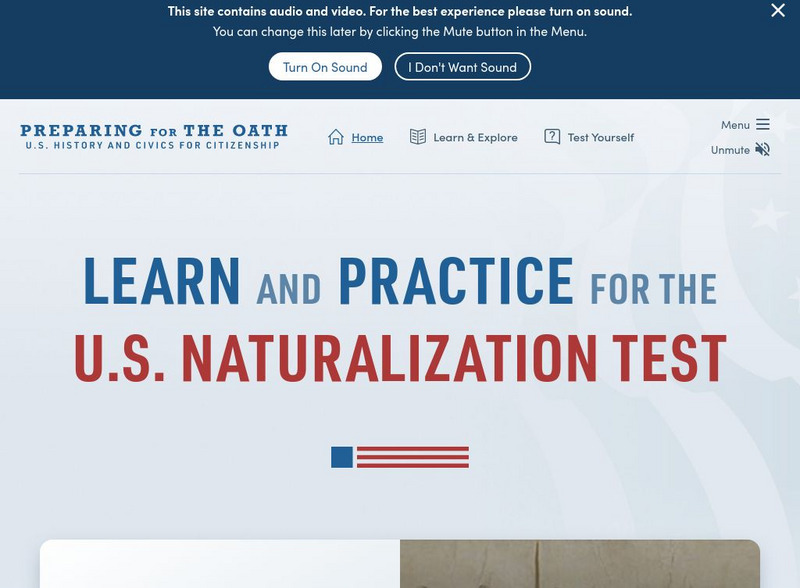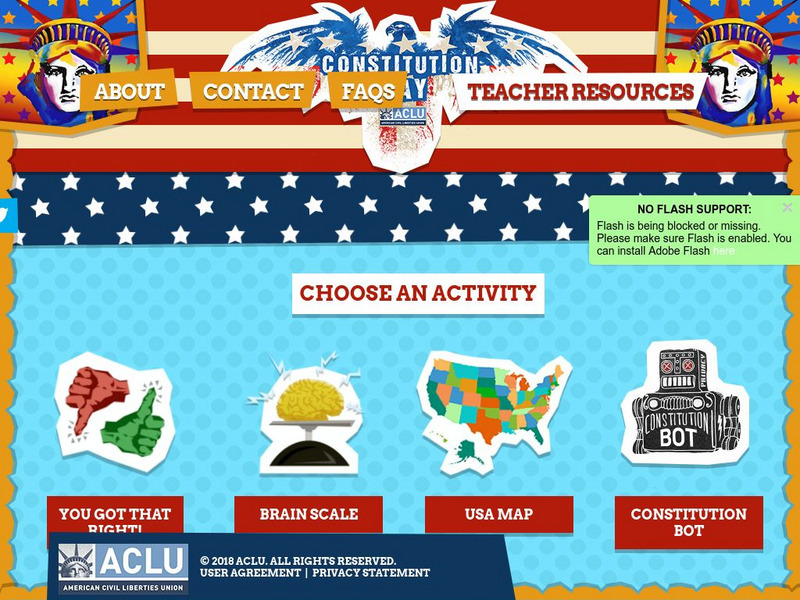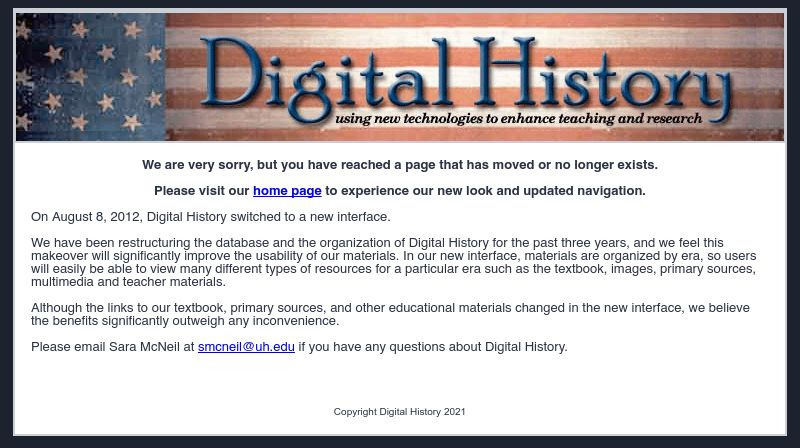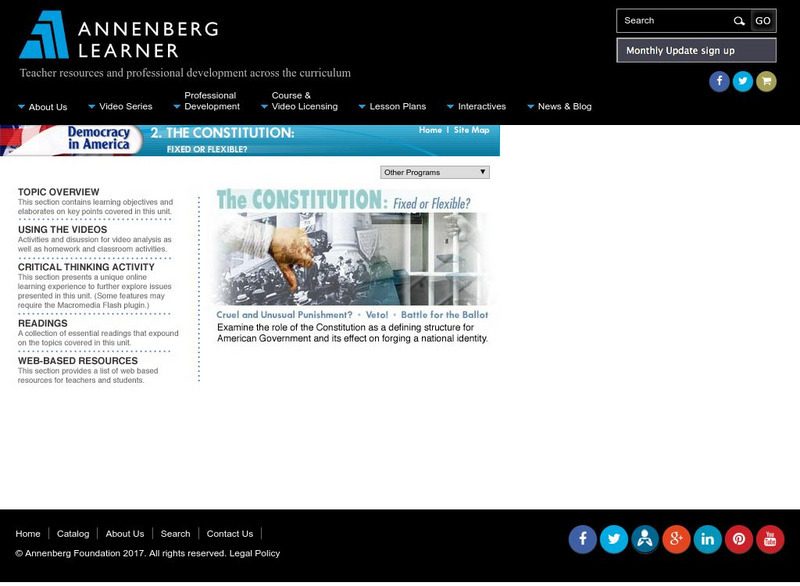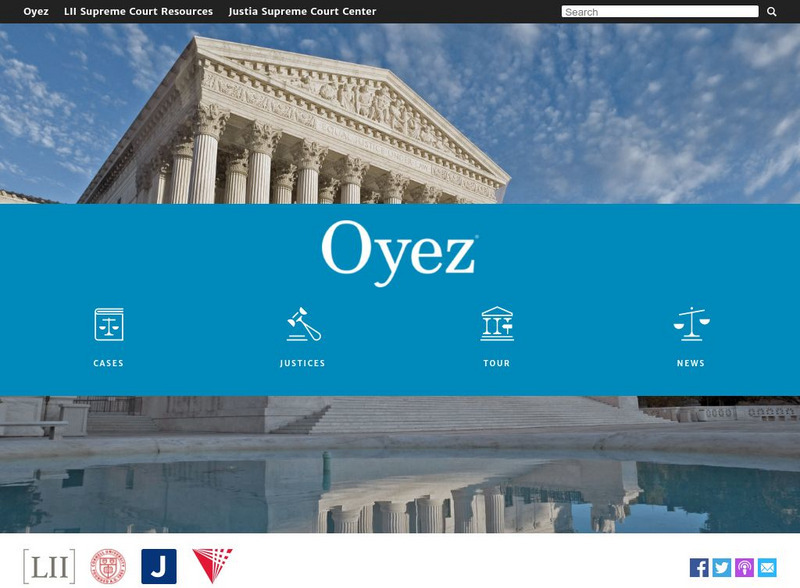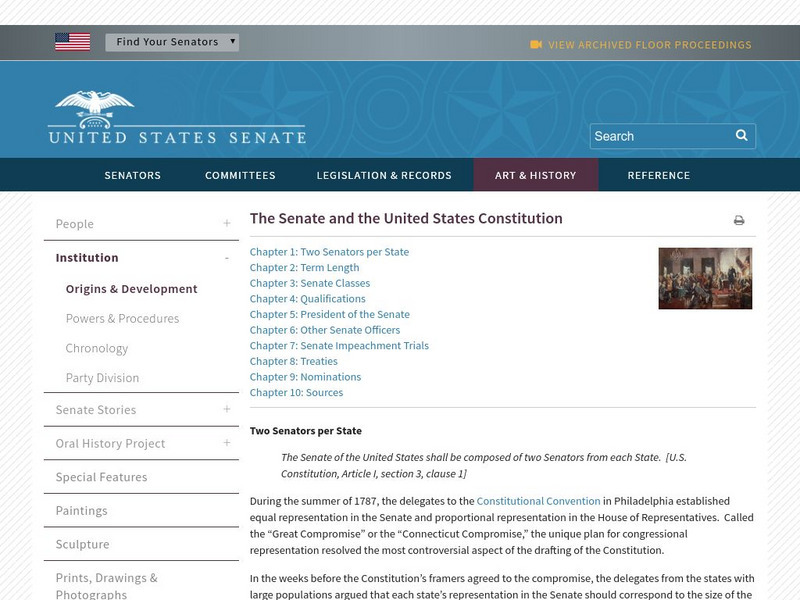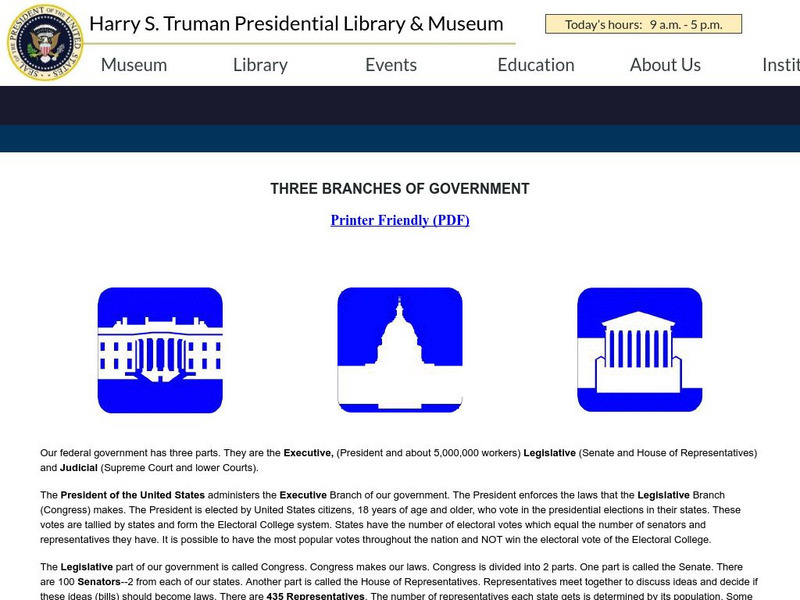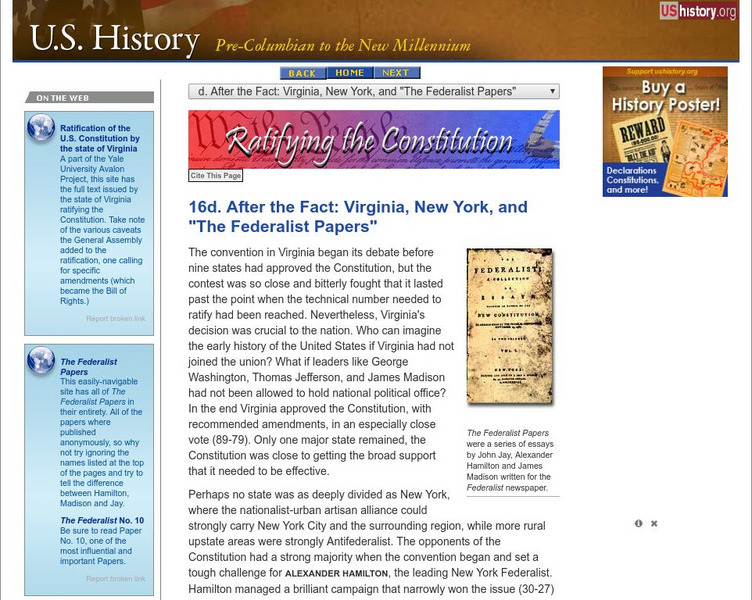Hi, what do you want to do?
Curated OER
A Dynamic Duo
Students engage in the research of history that surrounded the actions of the federal government during the years from 1907-1937. The focus of the lesson is upon the regulations imposed on business during the time and how it effected the...
Curated OER
The Declaration of Independence
Young scholars explore the Declaration of Independence and the Bill of Rights. They research a philosopher using reference books and reliable
Internet sources and write a two-page paper utilizing proper writing conventions. In addition,...
Curated OER
How the Court Became Supreme
Students investigate how the Supreme Court changed under the leadership of John Marshall. In this Supreme Court lesson, students recognize the role of the Supreme Court as well as the significance of Marbury v. Madison. Students also...
Curated OER
Crack the Secret Code-- Health Activity
In this health worksheet, students learn about proper diet and exercise by reading the cartoons and deciphering a secret code about health.
Curated OER
The Executive Branch
Learners study the federal government, which is divided into 3 branches. They have a minimal understanding of the responsibilities of each branch.
Curated OER
Rome: Republic to Empire
Sixth graders discuss the rise of Rome from a republic to a dictatorship. In small groups, they role-play as congress people debating whether or not to give the president more powers. In another activity, 6th graders produce television...
Curated OER
Constitution Word Search Puzzle
In this social studies activity, students find the words that are related to the concept that is the theme of the word search puzzle.
Smithsonian Institution
National Museum of American History: Preparing for the Oath: u.s. History and Civics for Citizenship
This site from the National Museum of American History, part of the Smithsonian Institution, is a great site for citizens and those learning to become citizens alike. Review the fifteen themes that deal with U.S. history and civics,...
The Dirksen Congressional Center
Congress for Kids: Checks and Balances
The system of checks and balances in place for maintaining the power relationships within the United States government is explained in kid-friendly terms. Suggestions for research projects, resource links and some activities are...
Digital History
Digital History: u.s. Constitution and Organization of the National Government
Read about the structure of the U.S. Constitution and the thoughts of the framers behind the formation of each branch.
Tom Richey
Tom Richey: Constitutional Underpinnings of u.s. Government
The first unit of an online course on AP US Government and Politics. It explores key concepts of American government, including constitutional government, republicanism, separation of powers, checks and balances, federalism, construction...
Oswego City School District
Regents Exam Prep Center: Introduction to u.s. Government
Explore the ideas and principles of American government including its influences, foundation, and basic tenets (such as checks and balances and federalism).
US Government Publishing Office
Ben's Guide to u.s. Government: Branches of Government
Students will visualize how the Constitution organized our 3 branches of government and the role each plays in our government. This infographic breaks down the powers of each branch and shows how they perform checks on the other...
Other
American Civil Liberties Union: Constitution Day Activities
Six activities teach students about the U.S. Constitution. Learn about checks and balances, the Bill of Rights, some of the history of the document, and how each of the states became a state. The site also provides teacher resources,...
Schools of California Online Resources for Education
Score: The u.s. Constitution Power Grab Game
Politicians like power, but who actually gets to use their powers in different situations? Take this quiz to sort out the checks and balances that are used on the various power plays.
Digital History
Digital History: Republicanism
The framers of the Constitution had a great distaste for the monarchial society of Great Britain. See how this was reflected in the checks and balances they wrote into the Constitution in an effort to create a working republic.
Harry S. Truman Library and Museum
Harry S. Truman Library & Museum: Three Branches of Government
Interactive teaching unit for Grades 5-8 that helps to explain the three branches of government and the the balance of power. Topics covered include balance of government, how a bill becomes a law, the amendment process, the Legislative...
Annenberg Foundation
Annenberg Learner: Democracy in America: The Constitution: Fixed or Flexible?
This unit explores the timeless qualities of The U.S. Constitution, the opportunities to amend it, and how it is a pillar of the American identity, through these activities, videos, and outside resources.
Illinois Institute of Technology
Oyez Project
The OYEZ Project is a vast multimedia relational database on the U.S. Supreme Court that contains abstracts for all leading constitutional decisions of the Court, authoritative oral arguments in streamed media format, and a 360-degree...
iCivics
I Civics: The Constitutional Convention Mini Lesson
Students explore how the U.S. government was created in the years following the Articles of Confederation.
US Senate
The u.s. Senate: The Senate and the United States Constitution
This site from the United States Senate provides information about the evolution of the Senate as the Constitution was being written by the Constitutional Congress.
Harry S. Truman Library and Museum
Harry S. Truman Library & Museum: Three Branches of Our Government
This slide and the six that follow it (use the advance button near the bottom of the screen) offer an explanation of each of the three branches of government and the duties they perform, including discussion of the tensions arising from...
US Government Publishing Office
Ben's Guide to u.s. Government: Learning Adventures: Three Branches of Government
Learning adventure guide on the three branches of government. Students read about the functions of the Legislative, Judicial and Executive branches and then play the learning game.
Independence Hall Association
U.s. History: After the Fact: Virginia, New Yok, and "The Federalist Papers"
Read about the necessity for Virginia and New York to support the ratification of the Constitution. See what influenced the vote in Virginia and how the legislature of New York was finally convinced.












